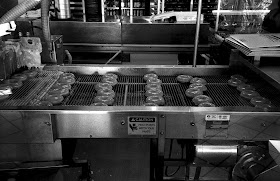You can't get there from here...
We visited the Portland Art Museum recently to take in a photography exhibit,
Wild Beauty: Photographs of the Columbia River Gorge, 1867-1957. Too many pictures in too many rooms on two floors, but I did finally realize the importance of Carleton Watkins whose work I had only previously given a passing glance. I had lumped Watkins in with a lot of other early scenic photographers that churned out postcard material in the 19th Century. That was quite an error, as it turns out that Watkins is one of the all-time greats in photography.
Watkins produced his most important work on either side of the Civil War in Western locales, including Yosemite and along the Columbia River. In spite of the fact that he seems not to have had any formal art training, Watkins' compositions are masterful. Understanding that is impossible, however, if you only can view the photos on line, or even in good reproductions. The problem is that the detail and tonal nuances captured on his negatives simply must be viewed close-up with actual prints to be appreciated. Watkins made some great stereo images, but his real masterpieces were produced with a mamouth,
custom-made view camera yielding 18 x 22-inch glass plate negatives from which contact prints were made.
The visit to the museum was for me a good reminder of how much superlative work was done so very early in the history of photography, as well as the fact that all the ingenious technological innovation of the following century has not produced photographic art that surpasses those early efforts. Vision, determination - and big negatives - still trump everything else.













































